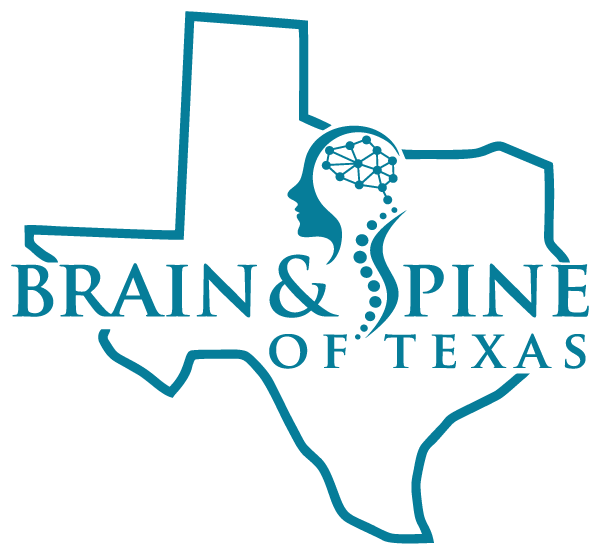Ulnar Nerve Release Surgery
Relieving Pain and Restoring Function for Ulnar Nerve Entrapment
Ulnar Nerve Release Surgery is a procedure designed to relieve the pressure on the ulnar nerve, which can become compressed or entrapped at various points along its pathway, often causing pain, numbness, tingling, and weakness in the hand and arm. This condition, known as ulnar nerve entrapment, commonly occurs at the elbow (cubital tunnel syndrome) or the wrist (Guyon’s canal syndrome). Ulnar nerve release surgery aims to alleviate these symptoms by removing or repositioning structures that compress the nerve, restoring normal function and reducing discomfort.
At the Brain and Spine Center of Texas, we specialize in ulnar nerve release surgery and are dedicated to providing exceptional care tailored to each patient’s needs. Our experienced team uses both traditional and minimally invasive techniques to ensure the best possible outcomes for our patients, with a focus on reducing recovery time and enhancing quality of life.
What is Ulnar Nerve Entrapment?
Ulnar nerve entrapment occurs when the ulnar nerve, which runs from the neck down to the hand, becomes compressed or pinched at one of several locations, most commonly the elbow or wrist. The ulnar nerve controls sensation in the ring and little fingers and some of the muscles in the hand and forearm. When the nerve is compressed, it can cause a range of symptoms, including:
- Pain along the inner side of the elbow or wrist.
- Numbness or tingling in the ring and little fingers.
- Weakness in the hand, especially when gripping or making a fist.
- Clumsiness or difficulty with fine motor tasks (e.g., buttoning a shirt, writing).
Over time, untreated ulnar nerve compression can lead to permanent nerve damage, loss of muscle strength, and decreased hand function. Ulnar nerve release provides an effective solution by relieving the pressure and preventing further damage.
What is Ulnar Nerve Release Surgery?
Ulnar nerve release surgery involves relieving the pressure on the ulnar nerve by either decompressing the nerve or releasing any structures that may be pinching it. The specific approach depends on the location of the compression and the severity of the condition. The most common surgical techniques include:
- Cubital Tunnel Release (Elbow) – For compression at the elbow, the surgeon will create an incision to release the cubital tunnel ligament or reposition the nerve if necessary to prevent further compression.
- Guyon’s Canal Release (Wrist) – For compression at the wrist, the surgeon will make an incision over the wrist to release the structures that are constricting the nerve.
- Ulnar Nerve Transposition – In some cases, the ulnar nerve may be repositioned under the muscle or other tissue to prevent future compression.
The surgery aims to reduce symptoms, restore function, and prevent further nerve damage. It can be performed through traditional open surgery or, in some cases, through a minimally invasive approach.
Who Needs Ulnar Nerve Release Surgery?
Ulnar nerve release surgery is typically recommended for patients who have severe or persistent ulnar nerve entrapment that has not improved with conservative treatments, such as rest, splinting, physical therapy, or medications. Surgery may be necessary if:
- Conservative treatments have failed to alleviate symptoms.
- The condition has caused muscle weakness or atrophy in the hand.
- Symptoms are affecting daily activities or work.
- There is a risk of permanent nerve damage if left untreated.
Ulnar nerve release surgery provides a long-term solution by addressing the root cause of the nerve compression and preventing future problems.
What to Expect During Ulnar Nerve Release Surgery
The procedure typically takes between 30 minutes to an hour, depending on the complexity of the case, and is usually performed under local anesthesia with or without sedation. Here’s what to expect during the procedure:
- Pre-Surgical Evaluation – Before surgery, your surgeon will conduct a thorough evaluation to assess the extent of the nerve compression and determine the best surgical approach.
- Surgical Procedure – The surgeon will make a small incision in the affected area (either the elbow or wrist), carefully release or decompress the nerve, and close the incision with stitches.
- Post-Surgical Care – A bandage or dressing will be applied to the surgical site, and patients will be monitored briefly before being sent home the same day.
Recovery & Post-Surgical Care
Recovery from ulnar nerve release surgery varies depending on the type of surgery performed and the individual’s overall health. Here’s what to expect during recovery:
- Pain Management – Mild pain or discomfort is common in the first few days after surgery, but it can be controlled with prescribed medications.
- Incision Care – The incision should be kept clean and dry to prevent infection. You will be given instructions on how to care for the wound.
- Hand Therapy – Physical therapy or specific exercises may be recommended to help strengthen the hand and improve range of motion.
- Activity Restrictions – You may need to avoid heavy lifting or strenuous activities for a few weeks as the incision heals.
- Follow-Up Appointments – Regular follow-up visits will be scheduled to monitor healing progress and ensure there are no complications.
Why Choose the Brain and Spine Center of Texas for Ulnar Nerve Release Surgery?
- Expert Surgeons – Our team of highly experienced surgeons specializes in the treatment of ulnar nerve entrapment and performs ulnar nerve release surgery with the latest techniques.
- Minimally Invasive Options – We offer minimally invasive surgical techniques when appropriate, resulting in smaller incisions, less pain, and a quicker recovery.
- Comprehensive Care – From the initial consultation to post-surgical rehabilitation, we are committed to providing the highest standard of care every step of the way.
- Personalized Treatment – We take a personalized approach to your care, ensuring that your surgery and recovery plan are tailored to your specific needs and goals.
Schedule a consultation
If you are experiencing symptoms of ulnar nerve entrapment and have not found relief through conservative treatments, ulnar nerve release surgery may be the solution you need. Contact the Brain and Spine Center of Texas today to schedule a consultation and take the first step toward relief.


